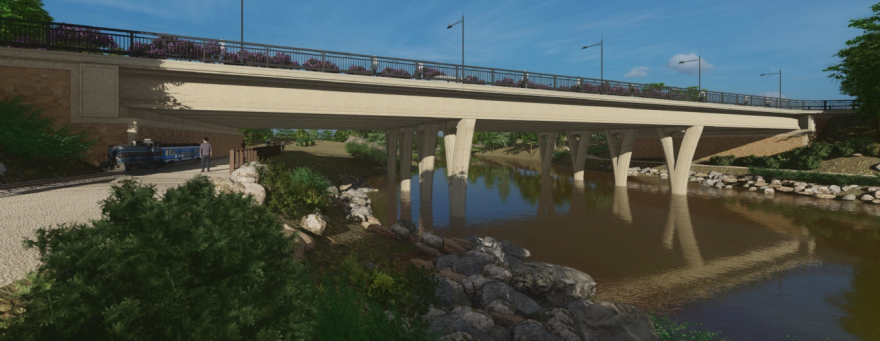An almost-century-old bridge that serves as a gateway to Zilker Park and a route to MoPac needs to be replaced, city officials say, despite the structure's historic significance. Now, the City Council has granted its blessing to move forward with a complete rebuild of the Barton Springs Road Bridge.
The concrete bridge opened in June 1926 — the same year Zilker Park expanded to 300 acres and construction of Barton Springs Park began, according to a historical report prepared for the city.
The crossing replaced an antiquated wooden structure that Austin officials had declared dangerous in the 1920s.
As car culture boomed in the post-World War II era, the city doubled the bridge deck width in 1946. A second sidewalk was added, but like the first, it was an unprotected walkway only 5 feet wide.
As the years rolled by, the bridge began to show its age.

City officials say bridge inspection reports — which have been removed from a 651-page public document on the Barton Springs Road Bridge — have warned the crossing is deteriorating. Heavy vehicles including Capital Metro buses must stay in the right lane when traveling eastbound.
Public Works Department staff studied rehabilitating the bridge, but ultimately ditched the concept, arguing it would cost about the same as a brand-new bridge. A renovated bridge would last 50 to 75 years instead of 75 to 100 for a new crossing, a November 2022 memo from Public Works head James Snow concluded.
The decision not to rehab the bridge roiled Save Our Springs Alliance director Bill Bunch, who insisted the structure be preserved.
"Please don't do this. It's the wrong thing. We need to be saving our historic bridges, including this one," he told city council members at a public meeting earlier this month.

Others have pushed the Council to move forward with a new bridge.
"The new pedestrian-bike upgrades made possible by this replacement bridge are transformative and will have a huge impact on the jewel to our city, Zilker Park," said Felicity Maxwell, a transit activist and member of the city's Planning Commission, a body that makes recommendations to council on zoning changes and other land rules.
City Council was unswayed by the preservationist argument, voting unanimously this month to adopt the replacement plan, except for council members Ryan Alter and Alison Alter who weren't present for the vote.

"I think generally it's probably a bad idea to band-aid together a fix of a bridge. If it's going to cost the same amount of money, wouldn't we want it to last another 100 years?" Council Member Paige Ellis said to KUT. Ellis represents District 8 which is among three council districts that converge at the Barton Springs Bridge.

"I'm open to looking at, as we replace it, can it look as close to the original design as possible," Ellis said.
Austin plans to almost double the width of the bridge deck from 59 feet to 109 feet. The new design would have wider sidewalks on both sides, two bicycle lanes, four car lanes and a median that would match the one on Barton Springs Drive east of Azie Morton Road.

The city's design would allow for new trails under the bridge and leave space for the Zilker Eagle, once the mini-train begins running again. The Austin Parks Foundation said in November that Zilker Eagle testing would begin in the "coming months" — again pushing back an estimated restart date for the decades-old children's ride.
Austin only has enough money to complete some of the plans for the bridge. The 30% design work — which outlines a bridge's structure and function — will cost about $10 million. The money is coming from city debt that voters agreed to pay back with property taxes in 2020.
Construction costs of replacing the bridge are estimated at $36.7 million. If Austin can come up with the money, staff with a city department called Capital Delivery Services believe a new bridge could be built by 2029.

Correction: This story has been corrected to clarify that heavy vehicles must use the right lane when traveling eastbound.







